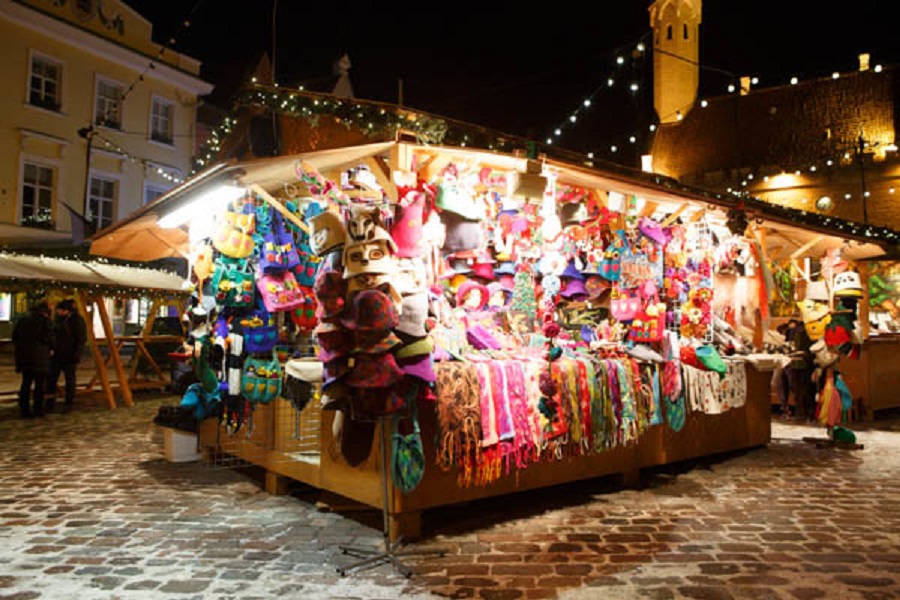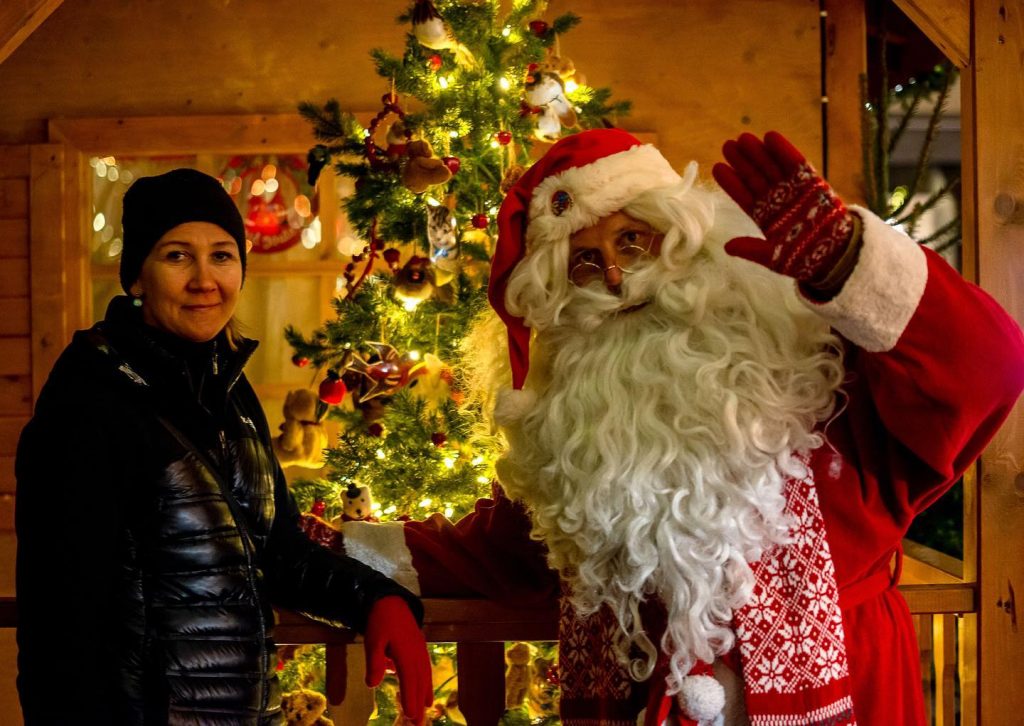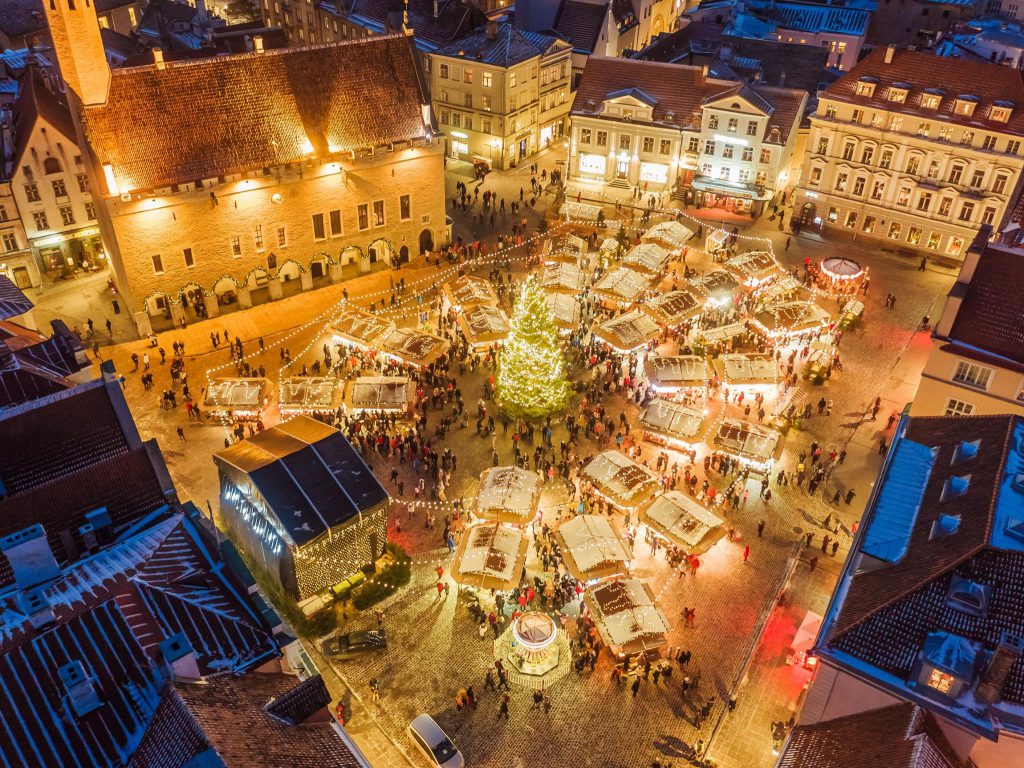The Tallinn Christmas market, voted the best in Europe in a poll organised by the European Best Destinations web platform, has opened in the Estonian capital and runs until 7 January 2020.
Tallinn’s modern-day Christmas market, that has been running since 1991, is in the centre of special focus this year – it bears the title of the best Christmas market in Europe in 2019, according to the result of a poll organised by the European Best Destinations web platform. According to the site, 208,000 worldwide travellers participated in the voting.
Among the international outlets, the European Best Destinations website is not an exception – in 2018, a widely-read travel magazine, Condé Nast Traveler, declared the Christmas market in Tallinn as one of the most charming in Europe. “Why we love it: In addition to Estonian Christmas dishes like black pudding and sour cabbage (it’s better than it sounds, we swear), Tallinn’s market in the Town Hall Square also has a Santa who arrives by reindeer-pulled sleigh,” the magazine said.
Not everyone is convinced
Locally, not everyone is convinced, however. “It is an ordinary tourist attraction – stupid, expensive and same every year,” was one of the comments in the largest expat Facebook group in Estonia, where the news about the opening of Tallinn Christmas market was raised and discussed by the group members.
“Well sure, none of the locals are going, the quality of Estonian Christmas foods at this market is unfortunately absolutely horrible, all the fur sold is coming from extremely unethical animal farms, the only beautiful thing is the view on the photos and the smell of glögi (a Scandinavian spiced, usually alcoholic drink, served warm – editor),” added another, this time an Estonian follower of the group.

Indeed, some of the offering in the market stalls tend to be a bit tasteless – don’t be surprised if you come across to one where you hear a bland disco music blasting into your ears, while you’re admiring kitsch handicraft that is not exactly locally made.
Domestic production preferred
But don’t worry too much. The market is still likely to get you into – or keep you in – the festive spirit. Tacky products aside, one can find a plenty of Christmassy food, sweets and drinks and as the organisers behind the market claim, “domestic production is preferred in the selection of goods because it is the local flavour that adds personality to the Christmas market”.
Small producers from the Estonian island of Hiiumaa have opened their own hut this year, selling what they call “genuine Hiiumaa products”, such as fish chocolate and artisan bread with blackcurrant, in addition to local lamb shank and honey. For the first time, the Tallinn Art Ceramics Factory, tracking its history back to 300 years, is also represented with its own hut.

As usual, one can also get fed on staple Christmas food in Estonia – verivorstid (black sausages filled with pork, barley, animal blood and spices, the Estonian version of black pudding) and sauerkraut (what the Condé Nast Traveler article, mentioned earlier, referenced as sour cabbage), while a rich selection of gingerbread caters for the sweet tooth. There is even a special “gingerbread house”, where you can have your name or good wishes written on gingerbread with glaze right on the spot.
Christmas strolls
As always, there’s also an entertainment programme that is hosted by Santa Claus (who’s “opening” his own hut on the first advent) with dancers, singers and musicians performing on weekends.

Tallinn celebrated its 800th anniversary in 2019 and on the occasion, the Tallinn Christmas market, in cooperation with the Tallinn City Museum, is organising a one-and-a-half-hour Christmas strolls on Sundays, discussing the emergence of Tallinn and how Christmas was once celebrated in Tallinn.
The strolls, which require a ticket, begin in the Christmas market and are conducted in Estonian, Russian and English. Christmas strolls include walking around in Toompea, visiting the City Museum, and the thematic exhibitions of Kiek in de Kök, a restored cannon tower from the 15th century.
Estonia and Latvia arguing about the first public Christmas tree in Europe
The tradition of celebrating the good Old Yule in the Tallinn Town Hall Square goes a way back – Estonians like to claim Tallinn is also the place where the world’s first public Christmas tree was erected, although Latvians, Estonia’s southern neighbours, dispute that, claiming the tradition was started in Riga instead (the historians have not agreed on either version, by the way).
According to the Estonian version, the first public Christmas tree ever was put on display in Tallinn in 1441 by the Brotherhood of the Black Heads guild, an association of local unmarried merchants, ship owners and foreigners that was active in the region at the time. The tree was the focal point of a ritual and involved unmarried merchants singing and dancing with local girls around a tree, which then was burnt.

Those complaining about the foreign-made stuff found in the market can at least take solace in the fact that this year’s Christmas tree is very local, indeed – grown on Rõika Street in Haabersti district in Tallinn, just a three and half kilometres (just over two miles) away from the Town Hall Square.
The Tallinn Christmas Market will be open until 7 January 2020, daily from 10AM to 8PM. Hot drinks are served from Sunday to Thursday until 10PM, Friday to Saturday until 11PM. A special Christmas programme runs on Fridays from 5PM to 7PM and on Saturdays and Sundays 12PM to 2PM. Santa Claus can be found at his hut from 1 December every day from 12PM to 6PM.
Cover: Tallinn Christmas market on the opening day, 15 November 2019. Photo by Kaupo Kalda.

